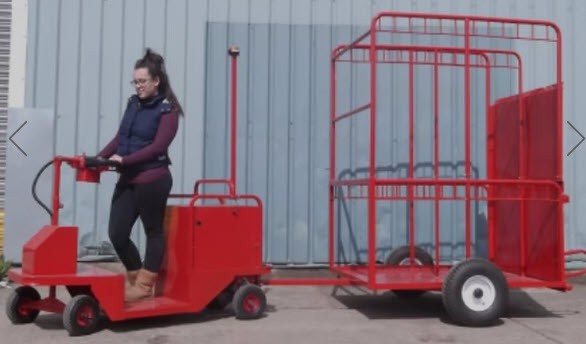Elements your SEO Strategy must include
SEO campaigns to improve online visibility, attract organic traffic, and enhance overall business performance are fundamental to SME business performance. Below are key elements to consider
- Keyword Research and Analysis
- On-Page Optimisation
- Technical SEO
- Link Building and Off Page SEO
- Local SEO (for location based SME’s)
- User Experience (UX) and SEO
- Monitoring and Analytics
- Content marketing and SEO
- Social Media and SEO
1: Keyword Research & Analysis
Keyword research and analysis is a crucial aspect of Search Engine Optimisation (SEO) that involves identifying the most relevant and effective keywords or phrases that users are likely to enter into search engines when looking for information, products, or services. This process plays a pivotal role in shaping a website’s content strategy and overall SEO efforts.
The first step in keyword research and analysis is to brainstorm and compile a list of potential keywords and phrases that are relevant to the website’s niche or industry. This initial list can be generated through various means, including competitor analysis, industry trends, brainstorming sessions, and customer feedback. It is important to cast a wide net during this phase to ensure that no potential valuable keywords are overlooked.
Once the initial list is generated, the next step is to evaluate and refine the keywords based on their relevance, search volume, and competitiveness. This involves using keyword research tools and analytics platforms to gather data on the search volume of each keyword, i.e., the number of times users search for that specific term in a given period. Additionally, the level of competition for each keyword is assessed, which indicates how difficult it will be to rank well for that term compared to others.
Understand User Intent
An essential aspect of keyword research and analysis is to understand user intent behind each keyword. This means deciphering whether users are looking for information, seeking to make a purchase, or simply browsing. By understanding user intent, website owners can align their content to match user expectations and provide the most relevant answers to their queries.
After evaluating the data, the list of keywords is narrowed down to a more focused and strategic set that strikes a balance between high search volume and manageable competition. Long-tail keywords, which are more specific and usually consist of three or more words, are often included as they tend to attract more targeted traffic and have a higher chance of conversion.
The selected keywords are then mapped to relevant pages or content on the website. This process involves ensuring that each keyword is associated with a specific landing page, blog post, or product page that adequately addresses the user’s search intent. Proper keyword mapping helps search engines understand the relevance of the content and improves the chances of ranking higher in search results for the targeted keywords.
Keyword research and analysis is not a one-time task but an ongoing process. Search trends change, user behaviour evolves, and new keywords emerge over time. As a result, SEO professionals and website owners regularly monitor and update their keyword strategies to stay relevant and competitive in the ever-changing digital landscape.
In summary keyword research and analysis is a fundamental process in SEO that involves identifying and optimising for the most relevant and valuable keywords to attract targeted traffic, enhance visibility in search results, and ultimately drive business success. By understanding user intent and incorporating strategic keywords into their content, website owners can establish a strong foundation for their SEO efforts and improve their chances of reaching their target audience effectively.
2: On Page optimisation
On-page optimisation is a crucial aspect of Search Engine Optimisation (SEO) that focuses on optimising individual web pages to improve their search engine rankings and visibility. This process involves various techniques and strategies aimed at enhancing the relevance and user-friendliness of the content on a webpage.
One of the key elements of on-page optimisation is keyword research. Identifying and selecting the right keywords is essential as they act as the foundation for the entire optimisation process. Webmasters and SEO professionals conduct in-depth research to determine which keywords are most relevant to their content and have a substantial search volume. These selected keywords are strategically incorporated into the page’s elements to signal its relevance to search engines.
Next, the page’s meta tags are optimised. This includes the title tag and meta description. The title tag is a concise and accurate representation of the page’s content and plays a significant role in search engine ranking. A well-crafted meta description not only helps in improving click-through rates but also gives search engines a better understanding of the page’s topic.
On-page optimisation also entails creating high-quality and relevant content. The content should be informative, engaging, and written for the target audience. It should naturally incorporate the selected keywords without excessive keyword stuffing, as search engines penalise such practices. Moreover, the content should be organised into proper headings and subheadings (H1, H2, H3, etc.), making it easier for both users and search engines to navigate and comprehend the page’s structure.
Another aspect of on-page optimisation involves optimising the page’s URL structure. A clean, descriptive, and keyword-rich URL can aid in better ranking and user experience. URLs that are simple, human-readable, and relevant to the content are more likely to be clicked on and shared by users.
Incorporating multimedia elements, such as images and videos, can also contribute to on-page optimisation. Properly optimised images with relevant alt tags help search engines understand the visual content, and they can also be ranked in image search results, driving additional traffic to the page.
Internal linking is yet another important on-page SEO strategy. Linking to other relevant pages within the website can improve the overall site structure and help distribute link equity throughout the website. This enhances the chances of other pages on the site being ranked higher in search engine results.
Additionally, on-page optimisation involves ensuring the webpage loads quickly and is mobile-friendly. Page speed is a significant ranking factor, and optimising for mobile devices is crucial as for many businesses mobile searches have surpassed desktop searches. Thus, responsive design and mobile-friendly content are essential for better user experience and search engine visibility.
In summary, on-page optimisation is a multifaceted process that aims to improve the quality, relevance, and user experience of individual web pages. By conducting keyword research, optimising meta tags, creating valuable content, optimising URLs, incorporating multimedia elements, utilising internal links, and ensuring mobile-friendliness and fast loading times, webmasters can significantly increase the chances of their pages ranking higher in search engine results and attracting more organic traffic.
3: Technical SEO
Technical SEO is a crucial aspect of search engine optimisation that focuses on the behind-the-scenes elements of a website, ensuring that it is optimised for search engines to crawl, index, and rank effectively. The process of Technical SEO includes various tasks aimed at enhancing a website’s overall technical performance, which, in turn, can positively impact its visibility and rankings in search engine results.
One of the primary components of Technical SEO is website crawlability and indexability. This involves making sure that search engine bots can easily access and navigate through the website’s pages. It includes tasks such as creating and submitting an XML sitemap to search engines, ensuring the proper use of robots.txt to control which pages are crawled and indexed, and fixing any issues that might prevent search engines from properly accessing the site’s content.
Another important aspect of Technical SEO is optimising the website’s page loading speed and performance. Search engines prioritise user experience, and a slow-loading website can negatively impact rankings and user satisfaction. Technical SEO specialists work on minimising page load times through techniques like image compression, caching, and minimising server response times. They may also optimise the website’s code and structure to reduce unnecessary code bloat that slows down loading times.
Ensuring mobile-friendliness is also a significant part of Technical SEO. With the increasing use of mobile devices for internet browsing, search engines now prioritise mobile-friendly websites in their rankings. Technical SEO involves making sure that the website is responsive and adaptable to different screen sizes and devices, providing a seamless user experience across desktops, tablets, and smartphones.
Proper website architecture is another key consideration in Technical SEO. Creating a clear and logical site structure with organised categories and hierarchical URLs can make it easier for search engines to understand the content and context of each page. This also aids users in navigating the website, leading to better engagement and potentially higher rankings.
Addressing and fixing technical issues that can negatively affect SEO is an ongoing task in Technical SEO. This includes resolving broken links, fixing duplicate content issues, managing 301 redirects, and addressing issues related to canonicalisation to prevent content duplication. By rectifying these issues, Technical SEO specialists help search engines understand the website’s content better and avoid potential penalties for duplicate content.
Lastly, ensuring the website’s security is part of Technical SEO. Implementing HTTPS, which encrypts data transmission between users and the website, is essential for protecting user information and improving search engine rankings. Search engines prioritise secure websites, and having an SSL certificate installed is considered a positive ranking factor.
Essentially, the process of Technical SEO involves optimising the technical aspects of a website to ensure better crawlability, indexability, user experience, and overall performance. By addressing these technical aspects, businesses can improve their chances of ranking higher in search engine results, driving more organic traffic, and providing a better user experience to their visitors.
4: Link Building and Off Page SEO
In the realm of SEO, link building and off-page SEO play crucial roles in boosting a website’s visibility and authority on search engines. Link building is the process of acquiring backlinks from other websites to your own site. These backlinks act as “votes of confidence” from other websites, indicating to search engines that your content is valuable and trustworthy. The more high-quality backlinks a website has, the more likely it is to rank higher in search engine results.
The link building process involves various strategies to obtain these backlinks. One common approach is reaching out to relevant and authoritative websites within your niche to request a link to your content. This may require creating compelling, informative, or unique content that other websites would find valuable to link to. Another tactic is to engage in guest posting on other websites, where you contribute an article or piece of content and include a link back to your site in the author’s bio. Additionally, participating in industry forums, social media, and online communities can help you build relationships with other website owners and potentially earn backlinks.
Off Page SEO
Off-page SEO, on the other hand, encompasses all the activities and optimisation efforts that occur outside your website but still impact its search engine rankings. While link building is a significant part of off-page SEO, it’s not the only factor. Off-page SEO also involves various other elements that contribute to a website’s reputation and authority in the digital landscape. One essential aspect is social media presence and engagement. Active participation and promotion on social media platforms can amplify your content’s reach, potentially leading to more backlinks and increased traffic.
Another critical component of off-page SEO is online reputation management. Monitoring and managing your brand’s online image, responding to reviews, and addressing negative feedback can impact how search engines perceive your website’s credibility. Positive online sentiment can indirectly influence your search engine rankings.
Furthermore, mentions and citations of your brand or website on other web pages, even without a direct link, can contribute to your website’s authority and visibility. Search engines consider these unlinked brand mentions as implied endorsements, which can positively impact your rankings.
It is important to note that off-page SEO is not just about manipulating search engine rankings; it should focus on building genuine relationships and offering valuable contributions to the online community. When done ethically and effectively, both link building and off-page SEO can significantly enhance a website’s visibility, traffic, and ultimately, its success in the highly competitive online landscape.
5: Local SEO (for location based SME’s)
Local SEO for location-based Small and Medium Enterprises (SMEs) is a crucial aspect of digital marketing to improve their online visibility and attract local customers. The process involves several key steps to optimise the SME’s online presence and enhance their chances of being found by potential customers in their target geographical area.
First and foremost, it begins with keyword research that focuses on location-specific terms relevant to the SME’s products or services. This involves identifying the most relevant and commonly used keywords and phrases that local users might use to search for businesses like theirs. By incorporating these keywords strategically into their website content, meta tags, and other online elements, SMEs can increase their chances of ranking higher in local search results.
Next, SMEs need to optimise their Google Maps and Search (previously called Google My Business (GMB)) listing. This involves claiming and verifying their business profile on Google, providing accurate and up-to-date information about their address, contact details, business hours, and categories. Ensuring consistency across various online directories and platforms is crucial as it helps Google build trust in the business’s legitimacy and improve its local search ranking.
Citations and online business directories play a significant role in local SEO. SMEs should actively seek to get listed on reputable local directories and niche-specific platforms. The more consistent and accurate their business information appears across these directories, the more search engines view them as a credible and reliable local business, boosting their local search visibility.
Additionally, customer reviews and ratings can greatly influence a local business’s online reputation and visibility. Encouraging satisfied customers to leave positive reviews on platforms like Google, Yelp, or Facebook can significantly improve the SME’s chances of attracting new customers and improving its local search ranking.
Localising website content is another crucial aspect. SMEs can create location-specific landing pages or sections on their website that cater to the needs of local customers. By tailoring content to local interests, events, and trends, businesses can better engage with their target audience and improve their local search performance.
Furthermore, building high-quality backlinks from local websites and businesses can boost the SME’s local authority and credibility in the eyes of search engines. Engaging in community events, partnerships, and sponsorships can help in acquiring such local backlinks.
Lastly, SMEs should ensure their website is mobile-friendly and has a fast loading speed. With the increasing use of mobile devices for local searches, having a responsive website is vital to providing a positive user experience, which can indirectly impact local SEO performance.
Local SEO for location-based SMEs involves a comprehensive approach to optimising online presence, from keyword research and website optimisation to managing local business listings, reviews, and engaging with the local community. By implementing these strategies effectively, SMEs can strengthen their local visibility and attract more customers from their target geographical area.
6: User Experience (UX) and SEO
In the realm of SEO, the process of user experience (UX) is a critical aspect that directly impacts the success of a website or online platform. User experience refers to the overall impression a visitor has while interacting with a website, encompassing various elements that influence their satisfaction, ease of navigation, and engagement. The ultimate goal is to create a seamless and enjoyable experience for users, ensuring they find the information they seek and have a positive perception of the brand.
One crucial element of UX in SEO is website design and layout. A well-designed website should have an intuitive and user-friendly interface, allowing visitors to easily find what they are looking for. This includes clear and consistent navigation menus, logically structured content, and the thoughtful placement of essential elements such as call-to-action buttons and contact information. A poorly designed site can lead to frustration and high bounce rates, adversely affecting search engine rankings.
Additionally, page load speed plays a significant role in user experience. Slow-loading pages can lead to user impatience and abandonment, negatively impacting SEO performance. Search engines tend to favour websites that load quickly, as it directly contributes to a positive user experience. Optimising images, using content delivery networks, and leveraging browser caching are some of the techniques employed to enhance page load speed.
Relevance to User and Interaction
Providing high-quality and relevant content is another critical component of optimising user experience for SEO. Content should be well-written, informative, and cater to the needs and interests of the target audience. A comprehensive content strategy that includes keyword research and on-page optimisation helps to ensure that content is not only engaging but also easily discoverable by search engines, leading to increased organic traffic.
Mobile responsiveness is a key aspect of user experience in the current digital landscape. With a significant portion of internet users accessing websites through mobile devices, it is crucial for websites to adapt to different screen sizes and resolutions. Mobile-friendly designs lead to improved user experience, lower bounce rates, and higher rankings in mobile search results.
Furthermore, addressing user intent is a critical consideration in SEO. Understanding the search intent behind specific queries allows website owners to tailor their content to match user expectations accurately. Whether users are seeking information, looking to make a purchase, or seeking entertainment, aligning content with their intent improves relevance and keeps users engaged, increasing the likelihood of conversion.
Finally, engagement metrics, such as time on site, click-through rates, and conversion rates, are vital in evaluating user experience in SEO. Search engines analyse these metrics to determine the relevance and value of a website to users. High engagement indicates that users find the website valuable, which can positively influence search engine rankings. Continuously monitoring and analysing these metrics enables website owners to identify areas of improvement and make informed decisions to enhance user experience and overall SEO performance.
7: Monitoring and Analytics
User monitoring and analytics play a crucial role in SEO as they provide valuable insights into how users interact with a website, helping businesses improve their online presence and user experience. The process of user monitoring and analytics involves tracking and analysing various metrics related to user behaviour, engagement, and conversion rates.
Firstly, website owners implement tracking tools like Google Analytics to collect data on user activity. This includes metrics such as the number of visitors, their geographic location, the devices they use, and the source of their traffic (e.g., organic search, social media, referrals). This data helps identify the most effective channels for driving traffic to the website and aids in refining marketing strategies.
User monitoring also involves studying user behaviour once they are on the website. This includes analysing metrics like time on page, bounce rate, and pages per session. A high bounce rate could indicate that the landing page content is not relevant to the user’s search intent or that there may be technical issues. Monitoring the time spent on pages helps understand which content is engaging users and which may need improvement.
Another vital aspect of user analytics in SEO is tracking the user journey and conversion funnel. By monitoring the conversion rate and analysing where users drop off during the purchase process or lead generation funnel, website owners can pinpoint potential issues that hinder conversions. This information can then be used to optimise the website’s design, content, and calls-to-action, leading to a more user-friendly experience and increased conversions.
Additionally, user monitoring involves studying the use of on-site search functionality and user interactions with specific elements like forms, buttons, and videos. Understanding how users interact with these elements provides valuable insights into their preferences, pain points, and helps identify areas for optimisation.
Moreover, user monitoring in SEO also involves studying the impact of website performance on user behaviour. Page load times, for example, can significantly affect user satisfaction and may lead to increased bounce rates if they are slow. Therefore, website owners analyse performance metrics to optimize loading times and enhance overall user experience.
By regularly monitoring and analysing user behaviour and engagement metrics, businesses can gain a deeper understanding of their audience, identify opportunities for improvement, and make data-driven decisions to optimise their website for both users and search engines. This iterative process of analysis and optimisation is essential to achieving and maintaining a competitive edge in the digital landscape.
8: Content marketing and SEO
Content marketing plays a pivotal role in driving organic traffic and establishing a strong online presence. The process of content marketing encompasses various strategic steps designed to create, distribute, and promote high-quality, relevant content that resonates with the target audience and search engines alike.
First and foremost, the process begins with comprehensive research and understanding of the target audience and their preferences. By identifying the target demographic, content marketers can tailor their content to address specific needs, pain points, and interests. This audience analysis helps ensure that the content generated is valuable, engaging, and resonates with the intended audience.
Once the target audience is defined, the next step is to develop a content strategy. This involves setting clear goals and objectives for the content marketing campaign. Whether the aim is to drive more traffic, increase brand awareness, generate leads, or boost conversions, a well-defined strategy helps align efforts towards achieving these outcomes. Additionally, the strategy outlines the type of content to be created, such as blog posts, articles, infographics, videos, or any other relevant formats.
Following the content strategy, content creation takes centre stage. High-quality, original, and informative content is crucial for success in SEO. Content should be optimised with relevant keywords to increase visibility in search engine results pages (SERPs). Moreover, the focus should be on providing value to the audience, answering their questions, and addressing their pain points. This not only enhances SEO but also establishes the brand as an authority in its niche.
Once the content is ready, the distribution phase commences. Content marketers employ various channels to promote their content and reach a wider audience. Social media platforms, email newsletters, guest posting, influencer partnerships, and content syndication are some popular avenues used to distribute and amplify content. Effective distribution ensures that the content reaches the right people at the right time, thus maximising its impact and potential to attract backlinks.
Link building is another integral aspect of content marketing in SEO. As quality backlinks from reputable sources are a significant ranking factor for search engines, content marketers actively seek opportunities to acquire relevant and authoritative links. This can be achieved through outreach, guest posting, collaborations, and producing link-worthy content that others in the industry find valuable enough to link back to.
Lastly, the content marketing process doesn’t end without measuring and analysing its effectiveness. Content marketers closely monitor key performance indicators (KPIs) such as website traffic, engagement metrics, conversion rates, and search engine rankings. By analysing the data, content marketers can identify what works well and what needs improvement, allowing them to refine their strategy for better results.
Content marketing is a multifaceted process within the domain of SEO. From audience research and content creation to distribution, link building, and performance analysis, each step is essential for driving organic traffic, improving search engine rankings, and establishing a strong online presence for a brand or business.
9: Social Media and SEO
The process of social media plays a crucial role in enhancing a website’s online visibility and engagement. It involves using various social media platforms strategically to promote and amplify a website’s content, attract more visitors, and ultimately improve its search engine rankings. The social media process is not just about sharing links; it encompasses a comprehensive set of activities that align with the overall SEO strategy.
First and foremost, social media involves creating and maintaining active social media profiles on platforms like Facebook, Twitter X, Instagram, LinkedIn, Pinterest, and others, depending on the nature of the business and its target audience. These profiles serve as valuable online assets that can be optimised with relevant keywords, business information, and a consistent brand voice.
Secondly, social media plays a crucial role in content distribution. After creating high-quality and SEO-optimised content on the website, such as blog posts, articles, videos, and infographics, sharing them on social media channels can significantly increase their reach. This distribution strategy aims to attract more clicks, likes, shares, and comments, which can lead to increased traffic and brand exposure.
In addition to content distribution, social media also fosters engagement with the audience. Responding to comments, messages, and mentions shows that a business values its followers, strengthens the brand’s online presence, and helps build a loyal community. Social media interactions can also generate user-generated content and testimonials, which can further enhance the website’s credibility and social proof.
Moreover, the process of social media in SEO involves leveraging social signals. Although the direct impact of social media on search engine rankings is a subject of debate, there is evidence to suggest that strong social signals can indirectly influence a website’s SEO performance. When content gains traction on social media and attracts significant engagement, it is more likely to be shared and linked to by other websites, potentially improving the site’s backlink profile and authority.
Social media also enables businesses to participate in industry conversations, network with influencers and other brands, and stay up-to-date with the latest trends and news. Engaging in these activities can lead to collaboration opportunities, cross-promotions, and increased visibility within the target market.
The process of social media in SEO involves creating and optimising social media profiles, strategically distributing high-quality content, fostering audience engagement, leveraging social signals, and participating actively in relevant conversations within the industry. By integrating social media efforts into the broader SEO strategy, businesses can enhance their online presence, attract more organic traffic, and ultimately improve their search engine rankings.
SEO Campaigns in Summary
For a small or medium-sized enterprise (SME) looking to enhance their online visibility and attract more organic traffic, the importance of an integrated process in SEO cannot be overstated. Integrated SEO involves the seamless coordination and alignment of various elements within the digital marketing strategy to achieve the best results. By weaving together on-page and off-page optimisation, content marketing, social media, and technical SEO, an SME can create a cohesive and powerful approach to enhance its online presence and compete effectively in the digital landscape.
First and foremost, integrated SEO ensures that all aspects of the website are optimised for search engines. This means paying attention to technical elements such as site structure, page loading speed, mobile responsiveness, and crawlability. A well-optimised website improves the user experience, making it easier for visitors to navigate and engage with the content, ultimately leading to higher search engine rankings.
Furthermore, integrated SEO focuses on creating valuable and relevant content that resonates with the target audience. A cohesive content strategy, which takes into account keyword research and user intent, allows an SME to position itself as an authoritative source in its industry. Engaging and informative content not only attracts more visitors but also encourages them to share the content, leading to natural link building and increased social signals that positively impact search engine rankings.
By integrating social media into the SEO strategy, an SME can amplify its online presence and reach a wider audience. Social media platforms are essential for driving traffic to the website, building brand awareness, and engaging with potential customers. When social media and SEO efforts align, they create a virtuous cycle, where social media shares can lead to more inbound links, thus reinforcing the website’s authority and search engine rankings.
Moreover, an integrated approach allows an SME to stay updated with the ever-changing SEO landscape. Search engine algorithms are continuously evolving, and tactics that were effective in the past may become obsolete or even penalised. By monitoring and adapting to algorithm updates, an integrated SEO strategy ensures that the SME’s online efforts remain effective and in compliance with best practices, reducing the risk of sudden drops in search rankings.
Lastly, an integrated SEO process provides a comprehensive view of the overall digital marketing performance. By analysing various data points and metrics, an SME can gain valuable insights into customer behaviour, preferences, and market trends. This data-driven approach allows for continuous improvement and optimization, leading to better ROI on marketing efforts and sustained growth.
In conclusion, for an SME seeking to improve its SEO, adopting an integrated approach is essential. By harmonising technical SEO, content marketing, social media, and other elements, an SME can build a strong online presence, attract targeted traffic, and stay competitive in the digital landscape. Integrated SEO not only enhances search engine rankings but also contributes to the overall success of the business by fostering brand authority, customer engagement, and long-term sustainability.












